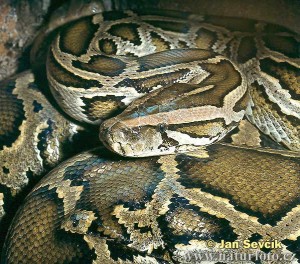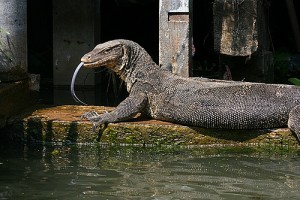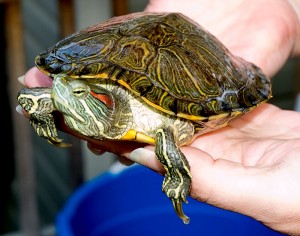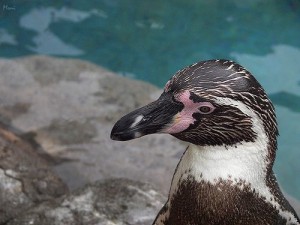Hello out there! My name is Mikey, and I’m one of the newer animal keepers at the museum. I’ve worked in other zoological facilities, been up and down the east coast, and am glad to call Durham my new home. I’ve been learning the ropes and enjoying the animals (especially training the bears with Katy) and in general having a blast at my new job.
One thing I have noticed though that happens here just like in other zoos I’ve worked in, is that a great many people call in when they want to find their pet a new home. Sometimes it’s gotten too big, or too aggressive or too expensive. Or they’ve lost interest in it, or only wanted it for a little while and now it’s time to pass it off. There are any number of reasons, but something that always seems to hold true is that people have a tendency to get an unusual or exotic animal and then eventually they don’t want it anymore.
I have helped with exotic rescues for many years now because the sad fact is that with so many unique pet possibilities out there, most zoos are overloaded and cannot take anymore. Also, by the time the animal is given up it’s too large or too aggressive for the majority of households and people. Where is this animal supposed to go? Should you just let it loose to fend for itself? The answers are that it is up to the owner to find a good home for it, and ABSOLUTELY NOT! – Many people have ended up letting their animals go because it’s nicer on their conscience to let it free (plus easier). The sad truth is that most of these animals will die in the wild, and those that don’t will present a problem to native wildlife as well as possibly even being a danger to humans.
We’ll start with some of the more common reptilian exotics that most people will eventually find unmanageable. These are Burmese Pythons, Monitor Lizards, Iguanas, even some aquatic turtles. These animals can be purchased as adorable babies usually for $50 or less, and will quickly outgrow everything they are housed in.

Burmese Pythons usually will grow to somewhere between 10-20 feet. They eat small mammals, so you will start off feeding your baby mice, but one day may progress to XL Rats, Rabbits, Chickens and Guinea Pigs.

Depending on the species of Monitor Lizard you obtain, you’re looking from 4-5 feet for a Savannah Monitor to about 8 feet for a Water Monitor. The most common and cheapest are the Nile Monitors, which get up to 6 feet long and generally have very aggressive attitudes. These lizards are full carnivores and will consume a diet of rodents, birds and fish, making a very large mess in the process. They are destructive and unless cleaned religiously, they get very stinky too.

Iguanas have more of a plant based diet, but need so many vitamins and nutrients in the proper amounts, that in the process of growing one from a baby you will spend an inordinate amount of money to do so, and if you neglect these practices your iguana will probably not make it to adulthood and will be the unhappy recipient of a great many health problems.

And everyone knows the cute baby turtles you can buy at the beach and live in little tanks. These are sliders. Both Red-Eared and Yellow Bellied are common. True, they are adorable but they can also get very large. The females will get larger then the males and eventually will have a shell larger than a dinner plate. They will outgrow all but the largest tank or livestock trough, and truly need to be housed in an outdoor pond to thrive. Most people especially like to let these go when they are too big – not a good idea because that particular sub-species may not live in your area, they will probably not make it though the winter since they are raised in captivity and if they do manage to survive, they will push out the native fauna of the area.
There are so many more species than just these that have become invasive and problematic due to the pet trade and irresponsible ownership. A unique pet is a wonderful and educational thing. As long as the proper research and abilities are had beforehand. If the commitment and knowledge are there, then all the best. But an animal is not an impulse buy. Especially one that could potentially take over your living room or eat your dog one day (unless it’s a little yappy dog- then it’s okay) 🙂 Good luck with your pets. And like the Knight in Indiana Jones and the Last Crusade said… “Choose Wisely”

